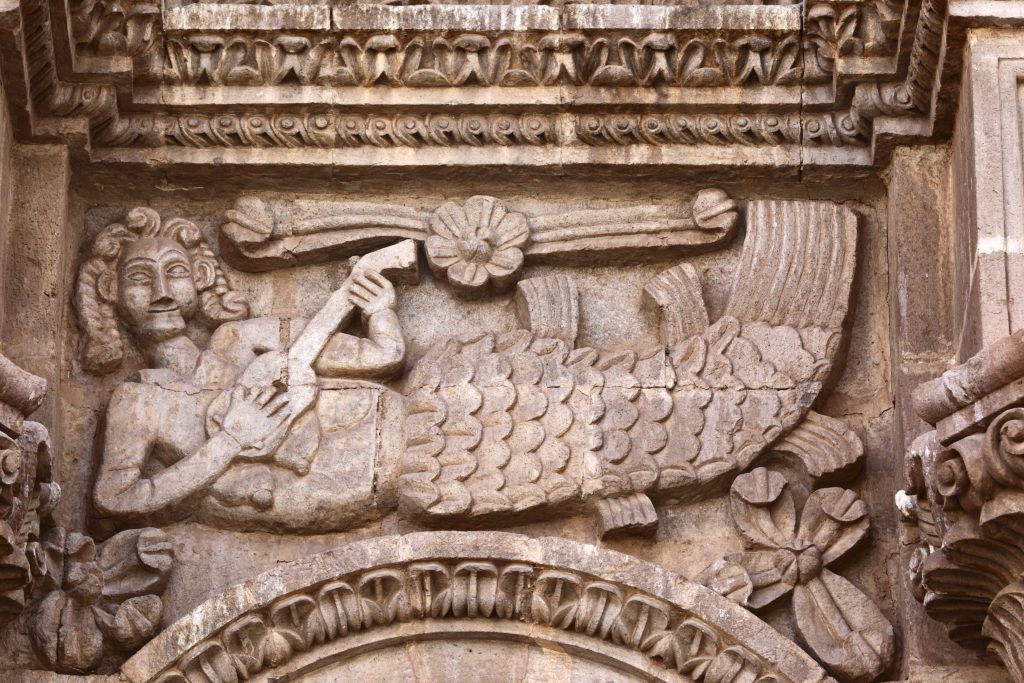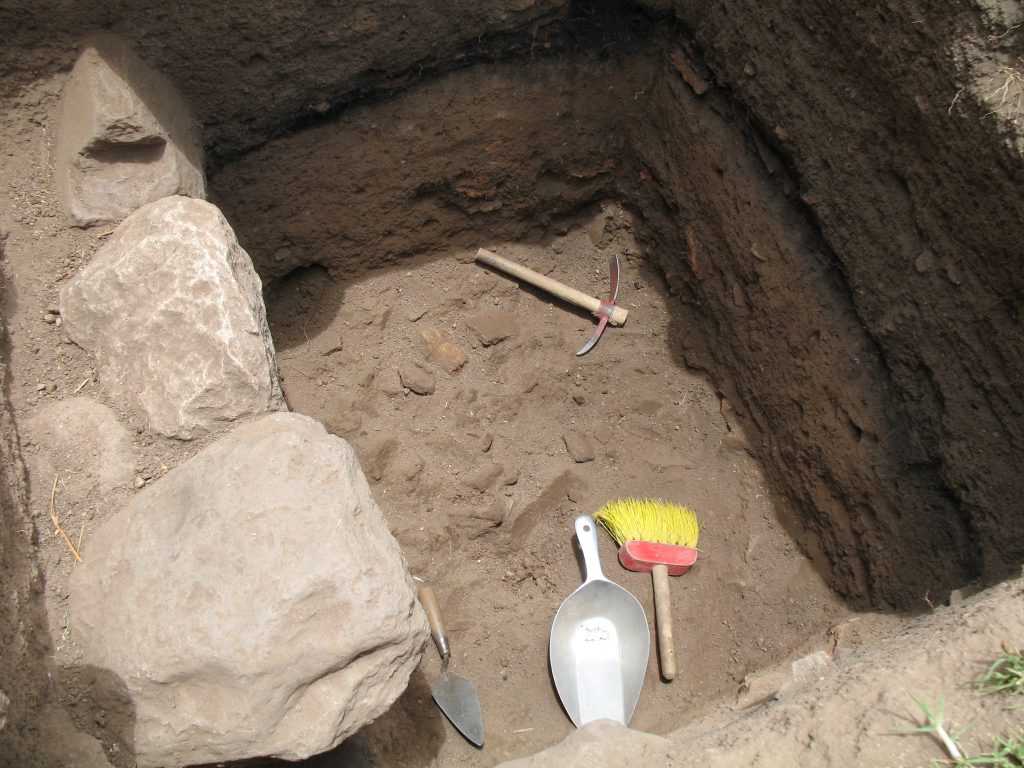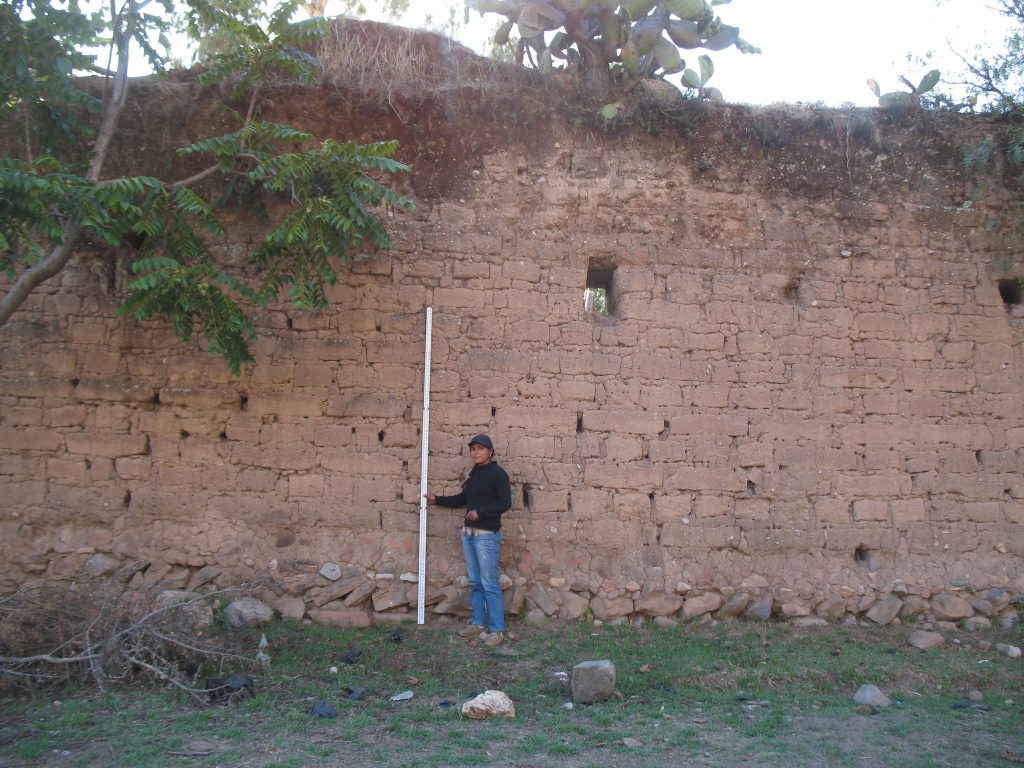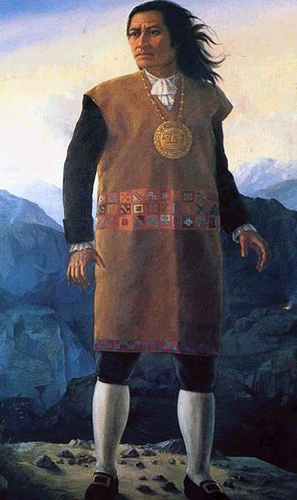The Revolutionary Power of Andean Folk Tales

In the 1700s, an unusually large number of blind men of Native descent lived in a highland village called Otavalo in what is now Ecuador. In a 1737 court case against an obraje, or textile workshop, near the village, a Spanish witness named Don Antonio Vera testified that people told a folk tale about this phenomenon. According to the story, he said, mermen of the local lakes had blinded the men in exchange for giving them good singing voices. The appeal on the part of the men was that singing during Mass in the textile workshops provided paid work and kept them out of a life of beggary and harsh labor.
The mermen tales expressed a Faustian bargain: Someone makes a pact with a powerful being in exchange for something desired—but never gets the good end of the deal.
As Vera went on to clarify in his testimony, the truth was far darker: In reality, the men had been blinded as infants by their own mothers in a desperate bid to keep them away from future harm. “Some [mothers], who were more pious, would blind them, and others would kill them so that they would not be subjugated to the obraje,” Vera told the court. The mermen legend stood as an allegory for the brutal oppression of the colonial Spanish rulers, who ran the textile workshops and other industries with the labor of indebted underclasses.
A variety of folk tales told under Spanish colonialism pointed to the truth about people’s exploitation and suffering. More than just a poetic way to express displeasure at their situation, these tales helped to form a common language and provided a sense of unity among different groups of oppressed people. Eventually, the tales played a role in the coordinated rebellions of the oppressed against the colonizers.
I had heard versions of merpeople stories—primarily those about mermaids—in many highland villages while doing research in the Andes, particularly in Peru, and had thought of them as curious and innocuous cultural stories. My dissertation research focused on archaeological investigations of textile workshops in the region under colonialism, but while in the field, I didn’t yet understand how these stories tied into the larger sociopolitical context of Spanish rule.
In the stories I heard, the general outline was that men, in particular musicians, would make a deal with the mermaids, who lived in dangerous watery places, to acquire something immediate that they desired, whether it be love, riches, or fame. The mermaids, however, always made debt cancellation impossible.
While conducting research in 2011 in Seville, Spain, I stumbled across the document containing Vera’s testimony in the Archivo General de Indias (General Archive of the Indies), which houses around 80 million pages of documents and maps related to colonial Spain’s overseas empire. The pieces started to fall into place.
After reading Vera’s words, the links to the textile workshops became clear. Spanish colonial textile workshops were death traps. Labor was often secured through giving out large loans of cash or liquor—especially to Native men—and when the debtors could not repay with interest, the textile workshop administrators would capture them and force them to work off their debt by weaving. The debt was, however, impossible to pay off because the workers also had to pay exorbitant prices for being sheltered and fed. When a worker died, his debt passed on to family members, who would then be captured and forced to work.
Conditions in Spanish colonial textile workshops were often ghastly; eyewitness reports describe the workers in the worst workshops as “skeletons.” Laborers suffered the cruelty of weaving to enrich others while going without sufficient clothes themselves. From archaeological excavations of a textile workshop in the community of Pomacocha in Peru, the site of my dissertation research, we found that the workers had to supplement their meager rations with anything they could find or raise within the walls of the compound. A trash mound we examined contained kitchen refuse—the bones of guinea pigs and immature chickens, eggshells, and peach pits. Textile workshops were often described as being dark and humid, like a damp grave. No wonder many mothers made the excruciating decision to kill or maim their male babies to prevent them from suffering such a fate.
Although work conditions were terrible and the oppressed far outnumbered their oppressors, armed rebellion was slow in coming. The Spanish colonized the region in the 16th century—but coordinated, widespread rebellions did not occur until the late 18th century. What exactly prevented people from rising up en masse against their rulers earlier?
After poring over tens of thousands of colonial documents and excavating the site in Pomacocha, I began to understand the complexities behind the issue of resistance. As bad as textile workshops were, they often promised wages, protection from labor drafts for work in deadly places such as mercury mines, and the right to use small parcels of land for planting crops. Sometimes the textile workshop administrators were relatively benevolent. In some cases, the workers actually defended “good” administrators and petitioned for them to be reinstated in situations where they had been replaced by less scrupulous administrators, saying that the previous administrator had respected costumbre, or custom. The term meant things like paying promptly, giving liquor and other gifts on holidays, not shutting workers in, and leasing land to help sustain the workers.
But even in such workshops, laborers were still being exploited: They paid rent for land that used to belong to their ancestors, and they never became prosperous despite working long hours. As U.S. abolitionist leader Frederick Douglass noted in the 1800s, for example, the morsels of good treatment received by slaves were simply fraud. As he put it in his autobiography, My Bondage and My Freedom, “To enslave men, successfully and safely, it is necessary to have their minds occupied with thoughts and aspirations short of the liberty of which they are deprived. A certain degree of attainable good must be kept before them.”
Another factor that contributed to a lack of collective resistance among the colonized was the fact that Native workers, in theory, had legal protections against debt slavery and other abuses. (This is why we have detailed court cases describing the worst practices of these workshops. The court case against the textile workshop in Otavalo was an example of the Spanish colonial state intervening on behalf of workers.) But even if these laws at times tempered potential unrest, they were not uniformly upheld; enforcement was difficult. Local interests and muscle trumped decrees from afar—like in the old Chinese saying: The mountains are high, and the emperor is far away.
The Spaniards also diffused the potential for organized rebellion by using divide-and-rule tactics. They had conquered a fragmented social landscape: The Andean region was a mosaic of different ethnic groups who were often politically at odds with each other. Through privileging select individuals or groups, colonialists were not only able to increase divisions between prosperous and poor Native Andeans, they also could exploit these political divisions between groups.
More sinister policies pitted people from different so-called racial groups against one another. For example, in textile workshops, mines, and haciendas (large agricultural estates), the literal muscle in charge of meting out physical punishment was almost always a person of African descent or a mestizo, someone of mixed Native and Spanish ancestry. In addition, mestizos would generally be the major-domos, or the everyday taskmasters and overseers of the workers. This imposed racial hierarchy made people from different backgrounds more mistrustful of each other, which helped the Spanish keep the exploitative system running.
One would think that the kind of folk tale described by Vera would actually help the oppressors by placing the blame for misfortune on mythical beings. But the folk tales and knowledge of the horrors of the textile workshops were not mutually exclusive. Rather, folk tales helped spread dread of the workshops by associating them with Faustian bargains. The folk tales were also a uniting force. They were shared by all laborers, including Native Andeans, mestizos, people of African descent, and even poor Spaniards. The folk tales provided a general consciousness of the systemic unfairness of the textile workshops, helping people see beyond individual or local grievances to a broader narrative. As much as the Spanish ruling class promoted divisions among groups, folk tales mobilized ordinary people from different backgrounds to confront their common enemies: Spanish labor institutions.
At the time, two general classes of folk stories circulated in regions that are now in Ecuador, Peru, and Bolivia. The first, like the ones about merpeople, emphasized Faustian bargains and the sapping of one’s power as well as the diminishing of fertility. In the case of the blind men described by Vera, they were robbed of the power of sight and presumably their prospects for raising a family. These stories helped generate a higher consciousness about the workings of the exploitative socio-economic system. Examples of similar tales that warned of the depletion of one’s power include the widely popular Andean story about a light-skinned vampire-like being, sometimes called pishtaku in Quechua, who preyed on the fat of humans. The version of this story that I heard from Aureliano Quispe, the former president of a village called Cacamarca, which was previously a textile workshop community, was that the foundry used human fat as the fuel when casting the church bells ubiquitous in textile workshops. The more human fat that was burned, the sweeter the church bells rang.
The second class of stories served to give people hope and inspire them to take action. They promised fertility—with no strings attached—and an imminent new world order where there would no longer be injustice or the heavy yoke of exploitative labor. For example, a popular folk tale in the 18th century was about the Inca returning to restore a just world order. José Gabriel Condorcanqui, or Tupac Amaru II, who styled himself after the last Inca ruler, Tupac Amaru, spearheaded an Indigenous uprising in 1780 against the Spanish in Peru. Many ordinary folk believed Tupac Amaru II was the legendary Inca leader who had returned to liberate them.
Farther south, in what is now Bolivia, Tomás Katari and Tupac Katari were inspired by the rebellion of Tupac Amaru II and led their own general rebellions. Textile workshops were a principal target of these pan-Andean uprisings and were often sacked and burned.
In general, the Andean rebellions of the 1780s were unsuccessful, in part due to the centuries of divide-and-rule tactics used by the Spanish. For example, Tupac Amaru II’s movement, while initially emphasizing alliances among different groups, fractured eventually. The folk tales, however—both the Faustian and inspirational types—persisted and continued to expand the social horizons of commoners.
During the Wars of Independence in South America in the early 1800s, the diverse peoples of the rebel armies ate, sang, and danced together—and told tales from their home villages. The composition of the rebel army in areas such as highland Ayacucho, Peru, reflected the overall demographics. About three-quarters were Native Andeans, the next largest group was made up of people of African descent, and the rest were so-called whites, which consisted of mestizos and a few Europeans, often in leadership roles. Military leaders from England, such as General William Miller, were popular among the recruits because they adopted many of the cultural customs of their soldiers, like wearing a poncho and chewing coca leaves. According to Miller’s memoirs, cultural exchange in the form of singing, dancing, eating, and telling tales was a staple of camp life. Stories were an important glue that held people together.
Not surprisingly, given the continued unjust labor practices in Andean Latin America today, folk stories still endure. For example, anthropologist Michael Taussig has written about how a devil pact that is commonly carried out by miners and hacienda workers is an allegory for the pitfalls of capitalism. Similar to the merpeople folk tales, a worker asks the devil to increase their production and riches, but in return, the devil has the person spend their newfound surplus on frivolous things and die an early death. And in a globalized twist to the old story about the extraction of human fat, people from places like highland Peru often say that the fat of Indigenous peoples is used in Western cosmetic ointments.
The textile workshops declined and mostly went bust in the late 18th and early 19th centuries due to competition from cheap imports during the Industrial Revolution. At that point they shifted their activities into agriculture, turning into haciendas. As recently as the 1960s, the haciendas, which were still functioning much as they had during the Spanish colonial era, were finally dismantled, sometimes violently by the workers. In Pomacocha during that time period, workers finally shook off the yoke of the monastery of Santa Clara, which had been their ruler since the early 17th century.
That uprising came about, in part, because some of the workers and others in the community had become politically aware of global communist movements and had allied themselves with neighboring communities. But a readied consciousness about the systemic nature of the exploitation they suffered had already been shaped by folk tales. So while stories alone are not sufficient to overcome exploitation, they have continued to play an important role in raising awareness among the oppressed peoples of the Andes and planting the seeds of rebellion in modern times.



































